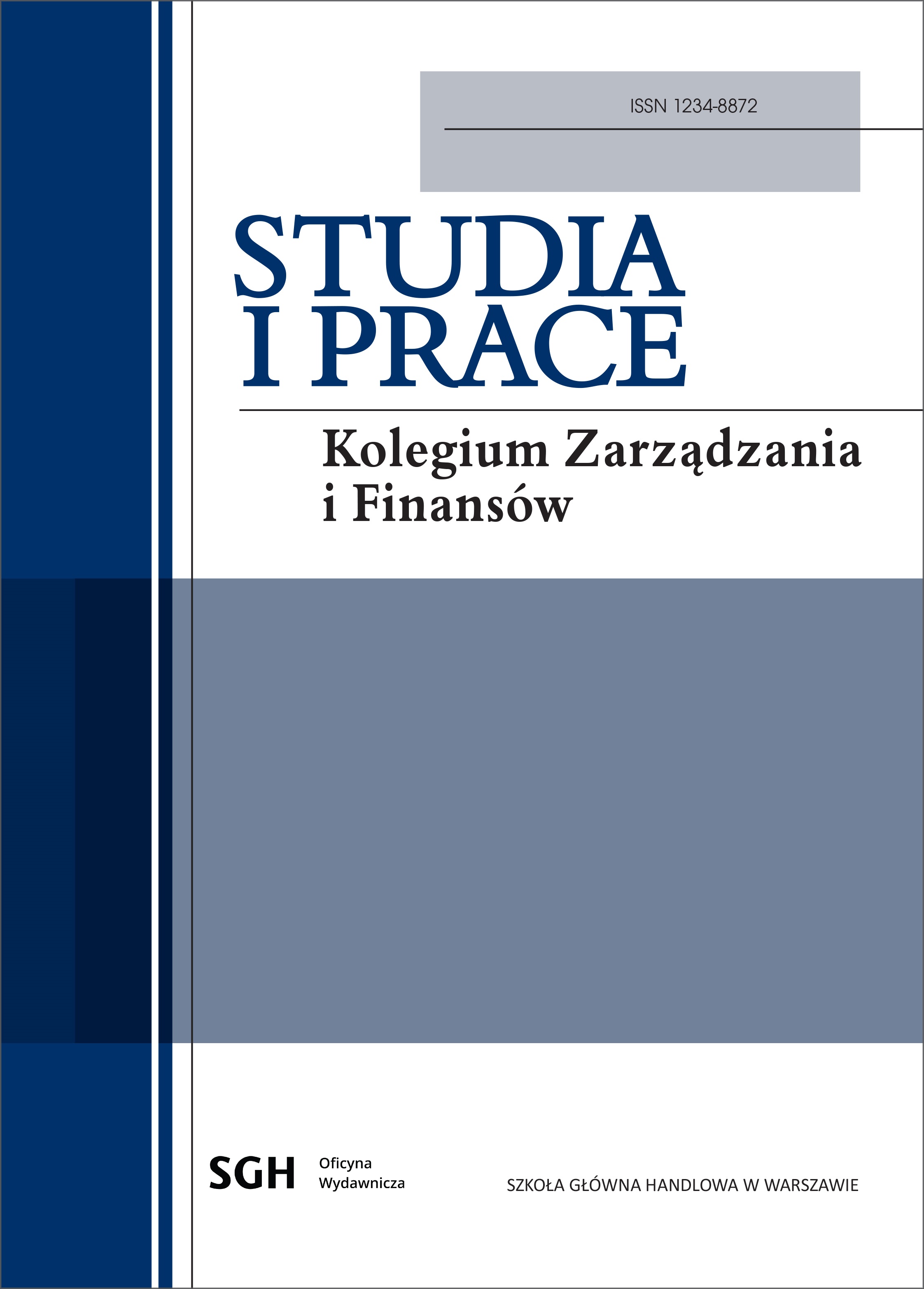Modelling Interest Rate Term Structure Within the Framework of Solvency II Directive: the Case of Poland
DOI:
https://doi.org/10.33119/SIP.2021.182.3Keywords:
Solvency II, interest rate term structure, Smith-Wilson method, valuation of liabilitiesAbstract
This work is about modelling interest rate term structure in the context of Solvency II Directive. The aim of the paper is to provide a comparative analysis of interest rate term structure modelled using the Smith-Wilson method and two other models rather commonly applied in practice to the Polish market. The analysis confirms that the application of Smith-Wilson method to the modelling of interest rate term structure by insurance companies and pension schemes in the Polish market in the context of Solvency II Directive is fully justified.
Downloads
References
2. Balter A., Pelsser A., Schotman P. [2021], What Does a Term Structure Model Imply about Very Long-Term Interest Rates?, „Journal of Empirical Finance”, doi: https://doi.org/10.1016/j.jempfin.2021.03.006
3. Batista C. M. [2015], How Do Current Term Structure Models Behave Beyond the Last Liquid Point? A Comparison of the DNS and Smith-Wilson Methods, praca magisterska, Nova School of Business and Economics Maastricht University, https://www.semanticscholar.org/paper/How-do-current-term-structure-model-behave-beyond-A-Batista/e547c0ccdeef12fcf3864f-57cb3f8869d22ebd61
4. Beers R. H. A. van, Elshof W. [2012], Evaluating the Solvency Capital Requirement of Interest Rate Risk in Solvency II, Milliman Research Report, Amsterdam.
5. Broeders D. W. G. A., de Jong F., Schotman P. [2016], Interest Rate Models for Pension and Insurance Regulation, Netspar Industry Paper Series, Design 56, https://www.netspar.nl/assets/uploads/Netspar_Design_56_WEB.pdf
6. Chang C. K., Li J. T. [2011], Extrapolation of Long-Term Risk-Free Interest Rates: A Case Study for the Taiwan Insurance Market, „African Journal of Business Management”, 5 (26), 10645–10656, https://academicjournals.org/article/article1380531188_Chand%20and%20Li.pdf
7. Chrzanowska M. K., Michalska A., Wielgosz M. [2013], Wyniki badania wpływu potencjalnych rozwiązań regulacyjnych dla tzw. długoterminowych produktów ubezpieczeniowych zawierających gwarancje (Long-Term Guarantees Assessment – LTGA) na krajowym rynku ubezpieczeniowym, Urząd Komisji Nadzoru Finansowego, Warszawa.
8. Dziwok E., Wirth M. [2020], Different Approaches to the Reference Yield Curve Construction – and Their Application into Fund Transfer Pricing Mechanism, Contemporary Trends and Challenges in Finance, proceedings from the 5th Wroclaw International Conference in Finance, https://www.researchgate.net/publication/341195911_Different_Approaches_to_the_Reference_Yield_Curve_Construction-And_Their_Application_into_Fund_Transfer_Pricing_Mechanism
9. EUNUPPE [2020], Technical Documentation of the Methodology to Derive EIOPA’s Risk-Free Interest Rate Term Structures, Europejski Urząd Nadzoru Ubezpieczeń i Pracowniczych Programów Emerytalnych, Frankfurt am Main, https://www.eiopa.europa.eu/sites/default/files/risk_free_interest_rate/21.08.2020_-_technical_documentation.pdf
10. FINANSTILSYNET – The Financial Supervisory Authority of Norway [2010], A Technical Note on the Smith-Wilson Method, Oslo, http://janroman.dhis.org/finance/Smith%20Wilson/A_Technical_Note_on_the_Smith-Wilson_Method_100701.pdf
11. Gach F. [2016], Note on the Smith-Wilson Interest Rate Curve, „International Journal of Theoretical and Applied Finance”, 19 (07), doi:https://doi.org/10.1142/S0219024916500394
12. Herold W., Wirth M. [2015], Asset Liability Management and Interest Rate Risk in Solvency II – an Empirical Study, Workshops – Proceedings of OeNB Workshops 20, s. 71–85.
13. Jorgensen P. L. [2018], An Analysis of the Solvency II Regulatory Framework’s Smith-Wilson Model for the Term Structure of Risk-Free Interest Rates, „Journal of Banking and Finance”, 97, s. 219–237.
14. Kliber P. [2009], Estymacja struktury terminowej stóp procentowych w Polsce, „Bank i Kredyt”, 40 (1), s. 109–126.
15. Kliber A. M., Kliber P. [2010], Podstawy modelowania struktury terminowej stóp procentowych, Wydawnictwo Uniwersytetu Ekonomicznego w Poznaniu, Poznań.
16. Lageras A., Lindholm M. [2016], Issues with the Smith-Wilson Method, „Insurance: Mathematics and Economics”, 71, s. 93–102.
17. Magurean M. M. [2016], Extrapolation Methods of the Term Structure of Interest Rates under Solvency II, Sapienza Universita di Roma, Rzym.
18. Murray K., MacDonnell B., Phelan E. [2019], Solvency II under Review: Part 1. Extrapolation of the Risk-Free Rate Curve, Milliman Report.
19. Nelson C. R., Siegel A. F. [1987], Pasimonious Modeling of Yield Curves, „Journal of Business”, 60, s. 473–489.
20. Stroiński K. [2008], Solvency II. Nadzór, wymogi zarządcze oraz nadzór grupowy, Polska Izba Ubezpieczeń, Deloitte Advisory, Warszawa, https://docplayer.pl/6151265‑Solvency-ii-nadzor-wymogi-zarzadcze-oraz-nadzor-grupowy-polska-izba-ubezpieczen-deloitte-advisory-sp-z-o-o-krzysztof-stroinski.html
21. Svensson L. E. O. [1994], Estimating and Interpreting forward Interest Rates: Sweden 1992–1994, Working Paper, no. 4871, NBER, Cambridge.
22. Wahlers M. [2013], Valuation of Long-term Liabilities under Solvency II – Extrapolation Methods for the European Interest Rate Market, praca magisterska, Maastricht University, Maastricht, https://www.netspar.nl/assets/uploads/044_MSc_Marie_Wahlers.pdf









